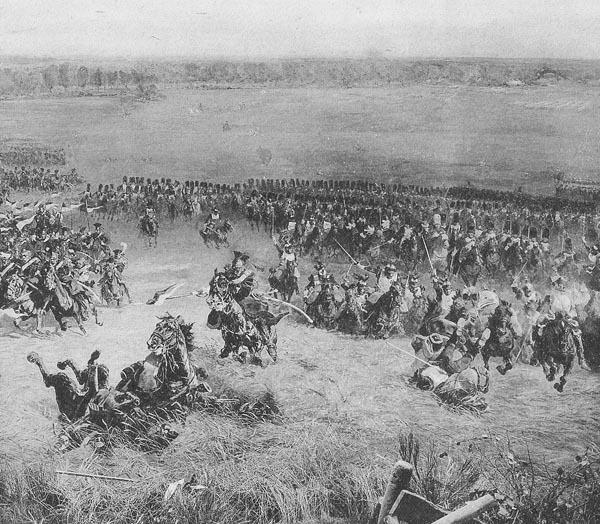Capitalists and workers are engaged in a constant battle to exert influence and control over pay and conditions as the two classes contend in the sphere of work and industry. This is as true now as it was at the birth of our class several centuries ago…
Unions in illegality: the Combination Acts of 1799 and 1800
WORKERS, SEPT 2010 ISSUE
When the 18th century began, the guild system still applied. A guild comprised several kinds of "class": from the merchants (or large masters) to the apprentices, though power rested in the hands of the merchants. Therefore small masters and journeymen began to form unions of their own to protect themselves and their interests. Nevertheless they failed to obtain incorporation or the right to create combinations, effectively compelled to secrecy when it came to organisation.
During the 18th century, mercantilist capitalism gradually gave way to industrial capital. The old methods of wage fixing became ineffective. A rising class of capitalist employers prompted the emergence of defensive labour organisations, combinations of workmen whose cooperation was the only means at their disposal for survival and protection. The combinations, embryo trade unions, were mostly of skilled and semi-skilled workers, artisans and craftsmen. They aimed to achieve abolition of the worst evils of the capitalist system and some improvement of living conditions. More and more trade clubs or societies were seeking to fix wages and conditions by collective bargaining. Employers resisted these efforts, constantly petitioning the government to uphold ‘ancient law’ and suppress the ‘unlawful’ organisations of workers.
Class clashes were numerous: 383 disputes were recorded between 1717 and 1800, but most incidents went unrecorded or were settled without recourse to law or officialdom. Most of the disputes centred on wages. In 1766 the shipwrights of Exeter, for example, decided not to work for masters who were seeking to employ them at "less wages than have been from time immemorially paid to journeymen shipwrights" and imposing longer hours than had been "usual and customary".
Some combinations were powerful and effective, threatening their masters to "strike and turn out” if their demands were not satisfied. During the 18th century, many acts were passed outlawing combination in one specific trade or another, as for example in 1718 against wool combers and weavers. In the same period workers lost several laws affording limited protection in this or that industry.
Repressive
Although the launch of the proceedings remained in the hands of the employers, the Combination Acts brought the government into a more repressive role against trade unionism because of fears that it would spread to the newly industrialised regions, especially the Midlands and the North, a goal only partially achieved.

|
| The Battle of Waterloo: it marked the end of the Napoleonic Wars, but not of the anti-union legislation brought in during them. |
The outbreak of war against revolutionary France intensified these fears because it was thought that revolutionary ideas would spread among the working class and that the unions would become centres of political agitation.
So at the end of the century, the government gave the “masters” complete control of their workers. As the Industrial Revolution in Britain got underway, all the legal restraints on workers in particular industries were standardised into a general law for the whole of industry. All the regulations and laws that recognised a worker as a person with rights were withdrawn or became inoperative. Initially, the act against illegal oaths was used to break up the existing trade unions. Then, the Combination Acts of 1799 and 1800, originally specific to the millwrights, were turned into a general prohibition and outlawing of trade unionism.
The acts forbade any combinations of workers to act together to improve their wages, reduce working hours or otherwise change their conditions of labour, with any violation punishable by three months imprisonment, or two months of hard labour. Magistrates, who were usually agreeable to the employers, passed sentence. It was the first time that penalties were prescribed for workmen as a class.
Ingenuity
With trade union organisations declared illegal, workers hoodwinked their opponents by reappearing as mutual benefit associations or similar bodies. (There are no limits to human ingenuity.) A large number of secret organisations carried on the fight against the employers and spurred the workers into resistance.
Where the government partially managed to constrain trade union development and activity, it did so more as intimidation than through undertaking prosecutions. Unions operated in a context of risk rather than of full and constant constraint. Over twenty-five years of illegality, the Combination Acts did not stop workers’ organisation nor were they totally enforced.
Convicted
Thousands of journeymen were convicted under these Acts, whereas no one employer was. The Times Compositors Union was suppressed in 1810 after they asked for a rise in their wages. Workers employed in the new factories and mines were constantly persecuted and often forced to combine secretly, for instance the iron founders in southern Wales. Resentment grew into opposition, most notably in the Luddite rebellions of 1811 and 1813 (to be featured in a forthcoming ‘Historic Notes’).
Introduced in wartime, the acts were not repealed with the return of peace in 1815. Repeal came in 1824, celebrated by an outburst of strikes. In 1825 a less stringent law was put in their place.
The temper of young industrial capitalism was harsh. Workers were refused education, political rights and any voice in their conditions of employment but they did not succumb and found ways to make progress.